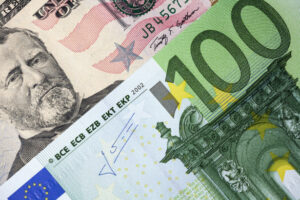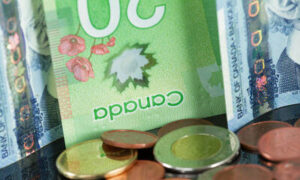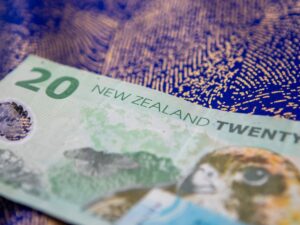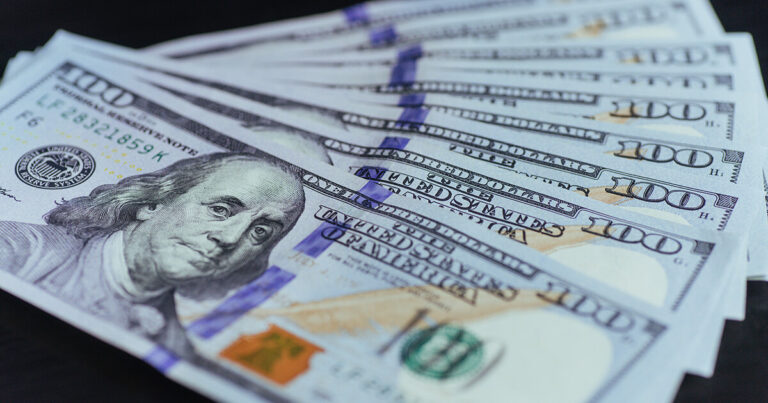
In this week’s wrap, the g7 currencies traded in a narrow range due to the lack of fresh fundamentals to drive the financial market. The forex market was mainly quiet in the week, with minor economic updates and no major news impact forex items to drive the market.
Despite that, the risk assets took the lead, with the safe-haven currencies performing worse off. Overall the Swiss franc occupied the bottom position while the New Zealand dollar emerged top performer.
Economic data and the spiking coronavirus infections fueled by the delta variant impacted the market.
The Fundamentals
COVID 19 Delta Variant
The Coronavirus delta variant continues to spread rapidly, pushing infections, hospitalization, and deaths to a new high in the G7 nations, with the US the most hit. The US reported a 35% surge to average over 100k new cases per day compared to the previous week.
According to WHO projections, COVID 19 cases would most likely surpass 300 million at the start of next year if the current infection rate continues. The organization further pointed out that infections continue to rise, despite the increased vaccination rates, particularly among unvaccinated citizens.
Even though coronavirus infections continue to surge globally, studies from the UK provided hope against the vice. It highlighted that the delta variant could be controlled by general caution and increased vaccinations.
However, cases in the UK surged after Boris Johnson eased restriction measures. This means restricted movement, social distancing, and immunization are crucial to winning over the pandemic.
Crude Oil Price Prediction

Oil started in a bearish run but recovered over the week to net a 7% gain, the highest gain in the last nine months. Oil demand optimism boosted crude oil price prediction despite the increasing concern on the delta variant.
Since most G7 nations with high vaccination rates have opened their economies, there has been a greater demand as more people have the freedom to move and become economically active.
Economic Data
Economic data is crucial in the analysis of currency performance. Unfortunately, G7 nations released scarce financial data that were heavily impacted by the coronavirus concerns. The Coronavirus pandemic, in particular, lowered consumer sentiment.
The decline in consumer sentiment resulted in enormous losses for the American dollar and Swiss franc on Friday, reversing the gains made early in the week. The continuing spike in the pandemic and the resulting restriction measures undermined the economic recovery process.
G7 Economic Review and Performance
Table: G7 performance summary
| currency pair | 7th Aug | 13th August | Average price | percentage | remarks |
| USD | 92.938 | 92.512 | 92.892 | 0.340 | Drop |
| GBPUSD | 1.3844 | 1.3863 | 1.3845 | 0.057 | Increase |
| EURUSD | 1.1737 | 1.1791 | 1.1742 | 0.2636 | Increase |
| USDCHF | 1.0859 | 1.0919 | 1.0858 | 0.1098 | Increase |
| USDJPY | 110.28 | 109.57 | 110.24 | 0.62 | Drop |
| USDCAD | 1.2574 | 1.2513 | 1.2527 | 0.3107 | Drop |
| AUDUSD | 0.7390 | 0.7369 | 0.7352 | 0.2176 | Increase |
| NZDUSD | 0.6991 | 0.7037 | 0.7015 | 0.4138 | Increase8 |
US Dollar News

In US dollar news, consumer sentiment and inflation primarily dragged down the greenback by 0.3%. The dollar closed the week at 92.523 after an increase of 0.68% the week before. The week’s economic news impact forex provided investors with mixed results.
Although US producer price figures on Thursday reflected prices surging, supporting the Fed’s decision to lift some monetary stimulus, consumer prices on Wednesday signaled inflation might have peaked, allowing it to be more flexible.
July’s inflation report came in lower than analysts anticipated as the annual inflation rate declined to 4.3% from 4.5%. And the consumer price index spiked by 5.4%. But while the inflation softened, on the other hand, consumer prices continue to increase, spiking by 0.5% after a previous 0.9% rise.
According to unemployment insurance claims, weekly claims fell to 375k from 387k. The economists had predicted a reduction to 365k. Overall, the economic update appeared to have lessened pressure on the FED, especially after the impressive previous week’s employment numbers.
Dollar value dropped further on Friday as consumers expressed significant consumer sentiment loss. The University of Michigan reports, consumer sentiments plunged to their lowest this year in the week, dropping to 70,2 from 8.2.
Analysts had anticipated a rise to 81.5. Concerns over the coronavirus also weighed heavily on the dollar. The US confirmed over 100K new cases each day over the week.
The European Majors Performance
Sterling Dollar Fx
 Over the week, the Pound edged down slightly 0.04%, ending the week at 1.3866. In the previous week, it had shed off 0.23%. The Sterling pound started the week under pressure due to concerns about the UK government and monetary policy.
Over the week, the Pound edged down slightly 0.04%, ending the week at 1.3866. In the previous week, it had shed off 0.23%. The Sterling pound started the week under pressure due to concerns about the UK government and monetary policy.
First, Boris Johnson threatened to sack Rishi Sunak. Second, MPC representative Saunders was reportedly the only hawk in the panel, putting doubts on an impending policy shift.
The UK released a flurry of economic data during the week, most notably the GDP growth news impact forex for the 2nd quarter. Its economy grew supported by increased consumer and government spending.
Q2 economy grew by 4.8% against a 5.1% growth projection. Also, industrial and manufacturing production missed forecasts. The manufacturing sector reported an increase of 13.9% versus a forecast of 14.0%.
However, while industrial production rose 8.3%, it fell short of a predicted 10.8%. Similarly, trade data failed to support sterling dollar fx. In June, the trade deficit ballooned to £2.5bn from £0.2bn.
In addition to the economic updates, COVID 19 delta variant weighed heavily on the Pound.
Dollar To Euro Forecast

For the week, the EU currency gained 0.30% to close at 1.1797, reversing a previous 0.91% loss. Mixed economic results drove the dollar to euro forecast. While Germany’s trade surplus increased to €16.3 billion from €12.5 billion, the Eurozone’s grew to €18.1 billion from €12.3 billion.
However, Economic sentiment news impact forex disappointed. Germany’s economic sentiment slipped to 40 from 63.3, with Indexes for the entire Eurozone plummeting to 41.7 from 61.2.
After falling 1.1% in May, European industrial production fell unexpectedly by 0.3% in June.
USD To Swiss Franc

For the week, the Swiss franc lost 0.1098% against the dollar. In contrast, the Swiss unemployment pace held steady at 2.8%, its import and producer price indexes spiked by 0.5%.
Switzerland’s franc started the week weaker and could not recover, which led to the most significant loss for the week. On top of the scarce economic data, increased coronavirus cases pressured usd to swiss franc performance.
Usd Cad Currency Forecast

In a tranquil week, the Canadian currency gained 0.31% to close at 1.2515, having rallied by 0.63% previously. The week lacked major statistics from Canada to influence the usd cad currency forecast.
However, general dollar weakness and oil price increase uplifted the Canadian dollar.
Asia Pacific G7 Currency Performance
In the Asia Pacific news impact forex, the bulls ensured the Japanese yen, the kiwi dollar and the Aussie dollar closed in the green territories.
AUD to US Dollar Forecast

Over the week, the Australian dollar gained 0.19% to close at 0.7370. The week’s economic news impact forex trailed on consumer confidence and business confidence figures. Australia’s recent lockdown measures negatively affected its economy.
While Australia’s Business Confidence Index reduced to -8 from 11, its consumer confidence level dropped to 104.4%. In addition, the inflation rate dropped from 3.7% to 3.3%. Even though the consumer confidence went down, the aud to US dollar forecast was less affected by the trend.
As the Coronavirus delta variant surged in Sydney and spread to other parts of Australia, the country widened lockdown measures and introduced a no-jab no-job policy.
NZ Dollar versus US Dollar

Despite scarce economic updates from New Zealand to influence NZ dollar versus US dollar performance, the kiwi dollar closed 0.46% up to 0.7042. July’s Business PMI dominated the kiwi’s news impact forex for the week.
According to economists, the business index grew to 62.6 from 60.7, beating their projections of a drop to 60.0. Among the sub-components in the news impact forex, hiring, and new orders increased.
Meanwhile, New Zealand’s projected inflation improved to 2.27% from 2.0%. Also, the average prices for houses in New Zealand increased by 25.2%.
USD Jpy Forex Prediction

During the second week of August, the yen strengthened by 0.60%, settling at 109.59, reversing the previous 0.48% loss. Japan had a quiet week characterized by scarce economic data to influence usd jpy forex prediction.
Japanese wholesale inflation reached a 13-year high as imports climbed. Besides, Japan’s goods prices increase by 1.1% monthly and 5.6% yearly.
Conclusion

Except for the Swiss Franc, the US dollar lost ground against the other g7 currencies. Coronavirus delta variant concerns, inflation, and consumer sentiments drove the news impact forex in the financial market.
Even though the Coronavirus pandemic has been ongoing, other G7 currencies have gained against the US dollar due to the latter’s general weakness.
The pandemic is expected to drive the financial markets as more countries introduce additional containment measures in the coming weeks.
Related: Currency Rate Trends From 31st July To 6th Aug, 2021




